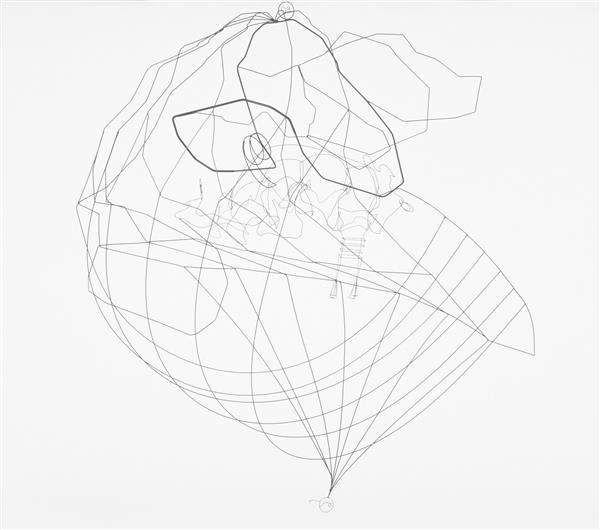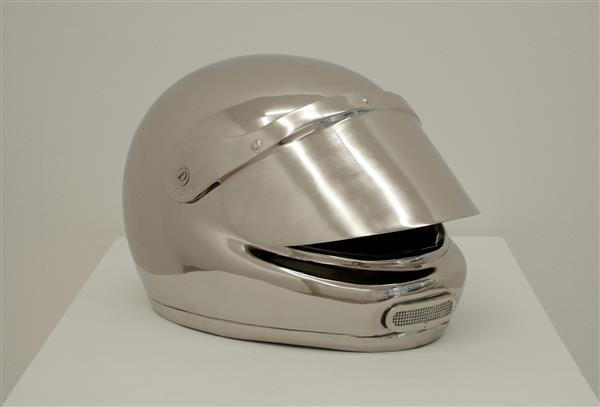D9, Der Partykracher
Constantin Luser
soldered and blackened brass wire and two shadows made of sheeting
wire: 60 × 60 × 70 cm; sheeting: dimensions variable
2015
Acquisition 2015
Inv. No. 0300
One has to imagine Constantin Luserʼs drawings to be a bit like complicated maps. They consist of precise lines, are pure contours and outlines without surface or shadow. Simply put, they have a character as if they had come from an electronic plotter and not from a dreamy draughtsman. At the same time, one thinks a bit about Hans Bellmerʼs work, who in addition to his famous puppet sculptures was absolutely committed to drawing. Though less nervous and not as completely dedicated to sexuality as Bellmerʼs work, Luserʼs drawings originate from a relatively concrete form – a word, a symbol or a silhouette – from which they then rapidly deviate. The line constantly changes its path and in this way melds elegant, seismographic pulses with patterns, bloodstreams with blueprints.
In the process, Luser takes advantage of what cognitive psychology calls Pareidolia. The term describes the phenomenon of seeing a recognizable form in things and patterns, like a cloud, for instance, but also in more complex drawings.
Even though D9, Der Partykracher is hanging from the ceiling and three-dimensional, it is based on a similar principle to Luserʼs drawings. The sculpture goes a step further, for where paper as a medium sets a limit to a drawing, a mobile is permeable, is its own fore- and back-ground. The frontal lines meet the ones behind and create, even when one is only a few centimeters away or walking around the object, an infinite number of different constellations. The two corresponding sides on transparent sheeting can be understood as a type of simulated shadow; like the sculpture, they positively float in the air. One is almost tempted to use a simple-minded word like “fantasy-filled” to describe what Luser does here.
Markus Schinwald, 2015 (translation: Virginia Dellenbaugh)
Publications
Constantin Luser. Music Tames the Beast [published on the occasion of the exhibition “Constantin Luser. Music Tames the Beast”, Kunsthaus Graz, Universalmuseum Joanneum, 26th February – 1st May 2016], , p. 48–49
evn collection. 95–2015 Jubilee, Vienna 2015, p. 254–257


